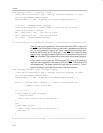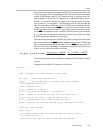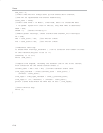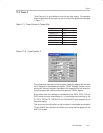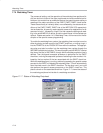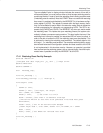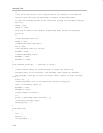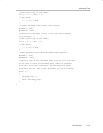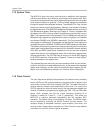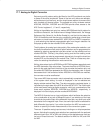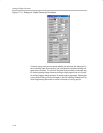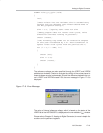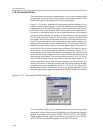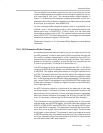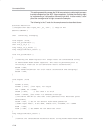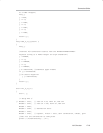
System Timer
17-16
17.5 System Timer
The MSC1210 device has many time ticks and an additional clock generator
(1MHz) that are derived, and, therefore, synchronized to the system clock. Each
time tick and clock generator has a set of registers that specify the value of system
clock divisions required to generate it. Some of these registers are accessible
through the system timer peripheral windows. The editable XTAL Freq.: window
allows you to set the crystal clock frequency. Setting it is just a matter of entering
the appropriate value. The ONEUSEC editable text window sets the value of the
One Microsecond register. Referring to the Chapter 8, Timers, it is apparent that
bit patterns in the fifth, sixth and seventh bit positions are ignored; they have no
effect. This is also enforced in this peripheral. The One Millisecond Low and One
Millisecond High registers are programmed through or displayed in the editable
text windows ONEMSL and ONEMSH, respectively. The One Hundred Millisec-
onds register, the Millisecond Timer register and the Seconds Timer register are
accessed through the HUNDMS, STIMER and MSTIMER editable text windows.
The statuses of the second system timer interrupt status flag and the millisecond
system timer interrupt status flag are reflected in the checked or cleared statuses
of the SEC and MSEC check boxes, respectively. You can also force a second
system timer iterrupt or the millisecond system timer interrupt by toggling either
of these check boxes. The SYSTEM clock is turned on or turned off by toggling
the SYSTON check box. Please refer to Chapter 8, Timers, for a more compre-
hensive discussion of the system timer.
The corresponding time interval for the one microsecond timer, the one millisec-
ond timer, and the one hundred milliseconds timer, on the bases of the registered
system clock frequency and the values of the pertinent timer registers, are dis-
played in the non-editable text windows 1µs, 1ms and 100ms, respectively.
17.6 Clock Control
The clock frequencies affecting the operations of the device timers, watchdog
timers, UARTs and SPI systems depend on the states of the bit pattern of the
value written into the Clock Control register (CKCON). The stretch time for the
external memory access is also determined by this value. The value of the
CKCON register can either be written directly into the associated editable text
window, or modified or programmed by toggling the T2M, T1M and T0M check
boxes, which program and set the crystal frequency divide-by-12 or
divide-by-4 modes for Timers 2, 1 and 0, respectively. This allows the
MSC1210 to maintain backward compatibility with the standard 8051
processor. The default setting is the divide-by-12 option. The MOVX stretch
can be modified by activating the MOVX Duration (Cycles) window. This
causes a display of selectable instruction cycle durations, from which, one
must be chosen. Please refer to the section for Timer Control for more detailed
information on the Clock Control register bit pattern.



